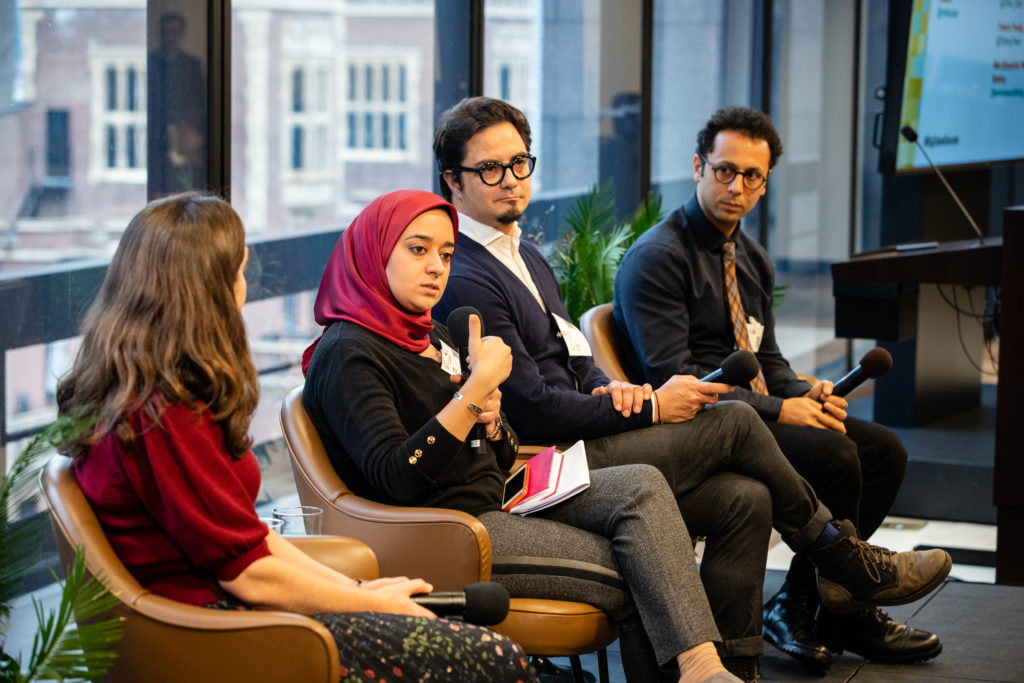There is no longer a question of whether big data can provide insights into the lives of women and girls. That case has been made: the answer is firmly yes.
However, using big data for gathering gender insights is one thing; employing this tool sensitively and with a nod to the many inherent challenges associated with digital data sources is another.

Data2X has worked at the intersection of big data and gender for five years. Our investment in this arena culminated in the launch of a report, Big Data, Big Impact? The Future of Gender-Sensitive Data Systems, on November 12 alongside an event where we convened researchers, industry leaders, and donors to consider how to foster gender-sensitive, policy-relevant big data systems while recognizing the potential consequences for women and girls. Here are some key takeaways we’ve learned from our work:
Conversations about data cannot be divorced from conversations about power.
Conversations about data, especially with regard to the Sustainable Development Goals (SDGs), have quickly veered to conversations about who counts and who is “left behind”. The same concerns that exist around counting everyone in traditional data systems exist for digital data systems but are increasingly complex because of data ownership and privacy.
When data is collected through national censuses or government administrative systems, it is clear who “owns” the data. Yet when we shift to digital data, the calculus changes. Who has power over the data, and who owns the data when it is collected passively via mobile phone use or credit card swipes? This data is wildly valuable — both to gain insights that can be used for good, but also to gain insights into companies where motivations may be murky.
In order to benefit from all the good that big data can offer, we will need new ways of collaboration that disperse control over data and ensure more equality in who is represented, who benefits, and who is impacted.
Data science is a new and growing field; now is the time to welcome all voices and perspectives for it to succeed.
Data science is a burgeoning and dynamic field. We see this as an opportunity to ensure that diversity is built in from the beginning. This diversity must exist at many levels and encompass everyone — from the people who are represented in datasets and the people who design algorithms or work with data to derive insights, to the people who use those insights to make decisions, design policy, and hold others accountable.
Whether it’s building new multi-stakeholder collaboratives that redefine how we work together around data or enacting policy that outlines data ownership and rights, we must ensure that there is diversity in representation at every level — in gender, race, gender identity, sexual orientation, ability, and more — across the entire data ecosystem.
2020 marks 25 years since the Beijing Platform for Action, and kicks off a “Decade of Delivery” for the Sustainable Development Goals. We cannot make or report progress on these global aspirations without committing to gender-sensitive data systems. Thus, this year is an important opportunity to place data feminism at the center of a renewed push for gender and data equality.
It’s not one or the other — we need ‘big data’ and ‘traditional data’.
When the SDGs were announced almost five years ago, there was great excitement about the data revolution. Now, after much experimentation and piloting, the time has come to translate that excitement into scalable solutions. This will require combining big and traditional data sources, leveraging the strengths and minimizing the downsides of each to cover a wide range of questions on social issues.
Big data can help us more accurately identify and describe trends for specific groups in particular areas, and faster than ever before, while traditional data (both quantitative and qualitative) can highlight the driving factors and point towards interventions to close gender inequality gaps. Recognizing their joint value signals an important and urgent action point for those working in and around the data system.
The future of gender-sensitive data systems.
When Data2X first launched our work on big data to address gender data gaps, the work was exploratory. Today, we are no longer asking whether big data is a tool we should be employing. We know the answer is yes. Instead, we’re asking how to set the groundwork for sustainable, gender-sensitive data systems.
In the coming years, Data2X will continue to push this work forward, in partnership with others, to set and encourage bold research agendas to answer critical questions aimed at closing gender gaps. We hope to help build and deploy our network of experts in this field and support innovation so that the new architecture around data systems delivers for all.
